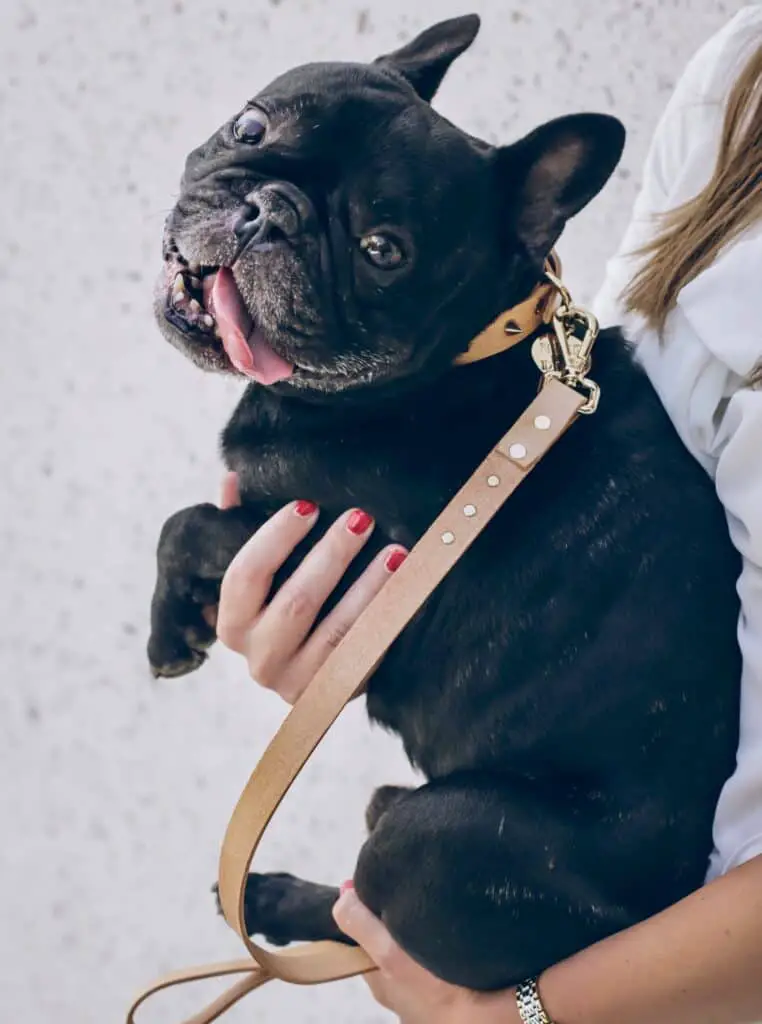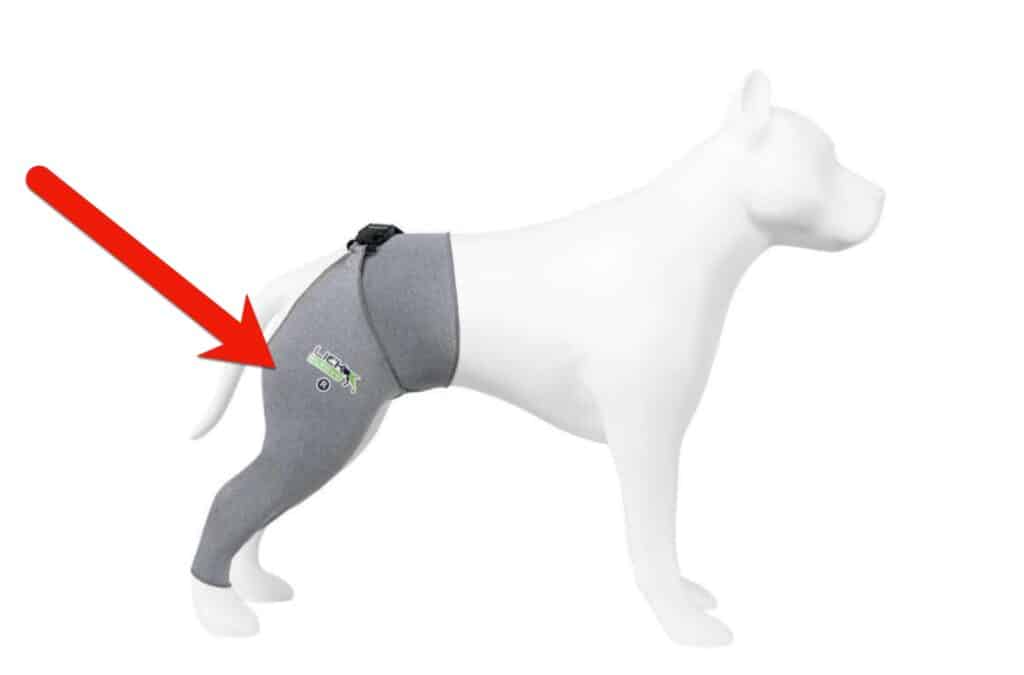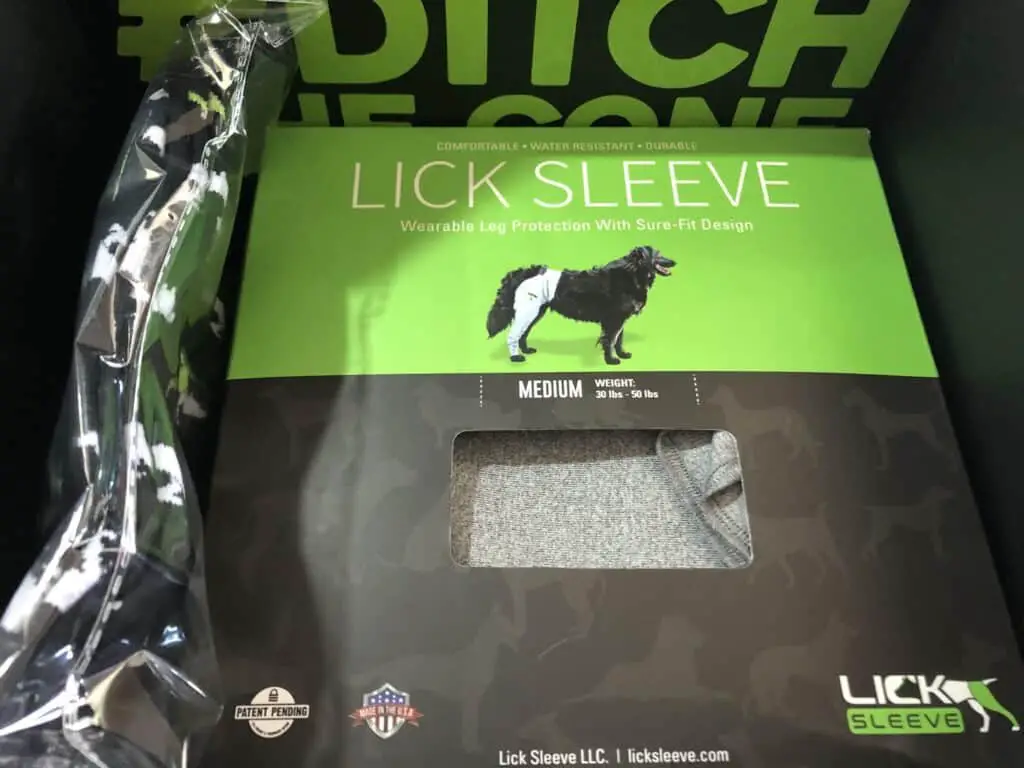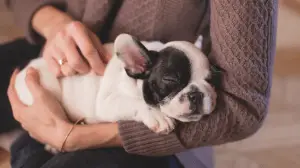French Bulldogs are a popular canine breed because of their cuddly and adorable appearance. Their cuteness is unfortunately a double edged sword because French Bulldogs are also prone to some health issues and even dog leg injuries. While proper breeding practices can largely help prevent some issues no matter how careful the breeder is, injuries can still happen
Apart from the usual dog leg injuries, you’ll also need to look out for health complications caused by its genetic makeup. These could include ear infections, skin problems, hip issues and degenerative disease.
In this article, we’ll be looking at common injuries of French Bulldogs and what you can do to help your beloved pet recover quickly.
Dog Leg Injuries – What To Know
Our dogs like to run, jump and play. Sometimes they push a little too hard and overdo it. When they push too much their front legs or back legs can sustain an injury. Sprains and strains are common dog leg injuries and they can happen anytime and anywhere. If you happen to hear your beloved dog yelp, they may need to get their injured leg looked at by a Vet.
You are likely wondering what can you do for a dog with a hurt leg?
The first red flag warning of a possible dog leg injury may be that your pup beginning to limp or suddenly become lame. If they can’t use their leg this is a big indication of an injury. Sometimes this can be a short term muscle strain and could recover with some rest. However, if this limping lasts more than a day or two you should schedule a visit to your local Vet. Also, if this happens on a recurring basis you should definitely visit your Vet to get your dog checked out.
The Difference Between Acute and Chronic Dog Leg Injuries
An acute dog leg injury is when it happens all of a sudden.
A chronic deg leg injury is when it is an ongoing and persistent injury. Both types of dog leg injuries can cross the range from mild to even severe. Severe dog injuries (a tear of the Anterior Cruciate Ligament for example) will require surgery to repair.
A qualified Vet will help you diagnose your dog’s leg injury. They will want to know if you saw what happened so they can determine the mechanism of injury. For example, when my Bulldog Noble tore her ACL I saw what happened. She was chasing another dog around the kitchen and she cut suddenly to change directions, she let out a loud yelp, and came up lame. She immediately started limping around and I suspected immediately that should may have torn something.
When I brought her to the Vet the next day the Vet determined from getting an account of what happened and some physical tests she likely tore her ACL. An X-ray confirmed that diagnosis.

1. Dog Leg Sprains & Strains
It’s only natural for some dogs to get carried away and roughed up during playtime. And when that happens, it could result in a sprain or strain.
A strain is an injury involving the tendons which connects your dog’s bones and muscles. Meanwhile, a sprain affects the ligaments that connect your dog’s bones. Your dog may be suffering from either of these injuries if you notice these signs:
- Limping
- Whining
- Decreased activity
- Difficulty climbing elevated areas like the couch or stairs
- Visible pain when your Bulldog attempts to walk
Once you notice these signs, take your dog to the vet to confirm if your pet has a sprain or strain. Some treatment your vet may recommend may include:
- Non steroidal anti-inflammatory drugs (NSAIDs) to manage inflammation
- Application of ice packs or heating pads to the affected area
- A brace to prevent movement and further injury
2. Dog ACL Tear
As mentioned above, I have experienced this unfortunate injury with one of my Bulldogs. She tore the ACL (anterior cruciate ligament) in her left knee after playing with another dog. She started limping pretty badly and I brought her to the Vet to get her checked out. The Vet confirmed that my beloved Bulldog tore her ACL and surgery was recommended.
The Vet recommended I bring her to an animal hospital that specialized in these types of dog leg injuries. They did what is called a TPLO repair. That stands for Tibial Plateau Levelling Osteotomy. In humans Orthopedic Doctors repair a torn ACL in a different way. In dogs, due to their anatomy, this type of procedure is how they fix the dog’s knee.
3. Dog Broken Leg
A broken leg is a serious injury that requires surgery. The purpose of the surgery is to rigidly align the broken bones so your dog can comfortably recover from the injury.
On average, a puppy’s broken leg will take about four weeks to heal. For older dogs, the recovery time could extend to eight weeks. While your dog is in recovery, practicing dog post-care surgery is a must. If your dog has an open fracture, you’ll need to ensure that the wound heals properly and doesn’t get contaminated by dirt and bacteria.
One way you can prevent the risk of infection is by preventing your dog from licking the incisions. A great option is to apply a recovery sleeve for dogs to protect the injury site and ensure a smooth recovery.

These leg protection devices from Lick Sleeve are a form-fitting fabric designed for dogs in recovery.


It offers an alternative to the cone of shame that could cause difficulty in drinking, collar-related injuries, and psychological distress.
My bulldog HATED her cone of shame so this is a good option to help keep their injured leg safe while healing.
Moving on…
3. French Bulldog Hip Dysplasia
Large breeds of dogs may be more prone to hip dysplasia but French Bulldogs are susceptible to the injury, as well. It can be traced to genetics, nutrition, environment, and your dog’s overall lifestyle.
Preventing hip dysplasia in French Bulldogs can prove difficult, however, because it’s a degenerative disease. But one of the simplest ways is to frequently walk your dog. After all, extra weight puts excess stress on the bones which could aggravate the condition. Pup Junkies states it also helps to include foods rich in glucosamine and chondroitin in your pooch’s diet to keep its joints and cartilage healthy.

If your pooch is at the early stages of this condition, you may notice that its hip joint fits loosely. But for more serious cases, you may want to watch out for these symptoms:
- Decreased activity
- Poor range of motion
- Narrow hind leg stance
- Lameness or limping in the hind leg
- Difficulty getting up from the floor or climbing elevated surfaces
Take your pooch to your vet if your dog starts to show signs of his dysplasia. Diagnosing the condition will usually involve x-rays, palpitation tests, and fluid workup. After that, your vet will create a treatment plan.
For puppies, a juvenile pubic symphysiodesis (JPS) procedure may be performed. The operation involves fusing the pelvis to improve stability. Meanwhile, if your dog is less than a year old, it may go through a triple pelvic osteotomy (TPO) which helps alter the orientation of the hip socket.
Adult dogs with hip dysplasia may go through total hip replacement (THR). During the procedure, your vet will replace the ball and socket of your dog’s hip joint with artificial implants.
Ensuring Your French Bulldog’s Comfortable Recovery From Dog Leg Injuries
As mentioned earlier, your French Bulldog is prone to disease and injury that could affect its quality of life. The last thing you’d want is for your cuddly ball of fur to get sick, right? So it’s always a good idea to look out for their well-being and spot early signs of illness. And keep your pooch happy and healthy through regular exercise and nutritious meals.



